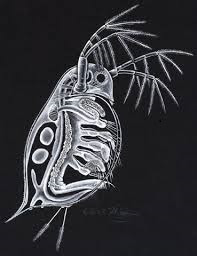When over 1,200 students across the Finger Lakes region gather to release their carefully raised trout into local streams, it's easy to focus on the joy and wonder the experience brought them. But behind every successful Trout in the Classroom season stands a network of dedicated supporters who make these transformative experiences possible.
The Power of Community: Sponsors
The Finger Lakes Trout in the Classroom program doesn't happen in isolation. It thrives because of the generosity and commitment of teachers, local businesses, community members, and watershed enthusiasts who believe in the power of hands-on environmental education.
In the 2024-2025 school year, we’re grateful for sponsors like Rogues Harbor Inn, Nancy Metzker, Wayne Gottlieb's family, Louise Mudrak, Caroline Marschner, Alice Galper, John & Alejandra Peterson, Bet the Farm Winery, Compton Farms, Hosmer Winery, Sharon Howry, and Andy and Denny Lane, along with those who have chosen to honor loved ones like Tom Nolan and Larry Friesen. Each $250 donation supports one classroom aquarium for an entire school year, providing students with supplies, equipment, and expert guidance as they nurture their trout from eggs to fingerlings.
Sponsorship is about more than just funding. Our aquarium sponsors become part of their adopted classroom's journey. The sponsor's name is added to the aquarium for the year, and they receive heartfelt thank-you notes from students who share what they've learned about water chemistry, aquatic ecosystems, and environmental stewardship. They're also invited to join the spring release field trips, where they can witness firsthand the impact of their generosity as students carefully release their trout into cold, clear streams like Salmon Creek, Fall Creek, Six Mile Creek, and Taughannock Creek.
If you’re considering sponsoring an aquarium or sharing the information with someone who may, please look ahead to the “How You Can Help” section below, or visit our donation page!
The Heart of TIC: Our Teachers and Volunteers
Sponsors provide the foundation that makes this program possible, but it's the partnership between funders and educators that creates the magic. The dedication of our teachers and volunteers brings Trout in the Classroom to life. Day in and day out, they all take on the responsibility of caring for delicate aquatic ecosystems while managing everything else a classroom demands.
Our teachers integrate trout care into their busy days by consistently testing water chemistry each week, troubleshooting tank equipment, and more. They turn water tests into math lessons, nitrogen cycle observations into science discoveries, and trout behavior into writing prompts. To every teacher who has welcomed a 55-gallon aquarium into your classroom, thank you. Your commitment to hands-on environmental education is creating ripples that will spread far beyond your classroom walls.
Our volunteer mentors provide invaluable support too, whether they're avid trout fishers sharing their expertise or nature enthusiasts who love working with kids. They visit classrooms, answer questions, help with water changes, and provide the extra hands and knowledge that make teachers' jobs a little easier. Here is a big thank you to all of our volunteers:
THANK YOU
We see you all, we appreciate you, and we're honored to support you and be a part of your team. You are the ones who turn this program from an idea into a life-changing experience for students each year.
Join Us for the 2025-2026 Season: How You Can Help
As we look to the current school year, we're seeking sponsors to adopt aquariums for the next generation of student scientists. With 20 participating schools and over 1,200 students eager to learn, there are opportunities to make a direct impact in each classroom.
This support opens doors to engaged learning, transforming ecological concepts into personal experiences. Students learn responsibility as they monitor water quality, mathematics as they measure ammonia and pH levels, and ecology as they observe the nitrogen cycle in action. Most importantly, they develop a personal connection to their local watershed that often lasts a lifetime.
Ready to sponsor an aquarium? Visit our donation page to adopt an aquarium ($250) for the 2025-2026 school year and connect with a classroom near you!
Not quite ready to sponsor an aquarium, but still want to get involved? Plan ahead for next spring by viewing our cruise options, booking a private charter, or purchasing a Lake Lovers Season Pass. And don't forget to follow our social media accounts (@DiscoverCayugaLake on Instagram and Facebook) for winter updates about program highlights, student discoveries, and behind-the-scenes glimpses of aquarium life!













.gif)











